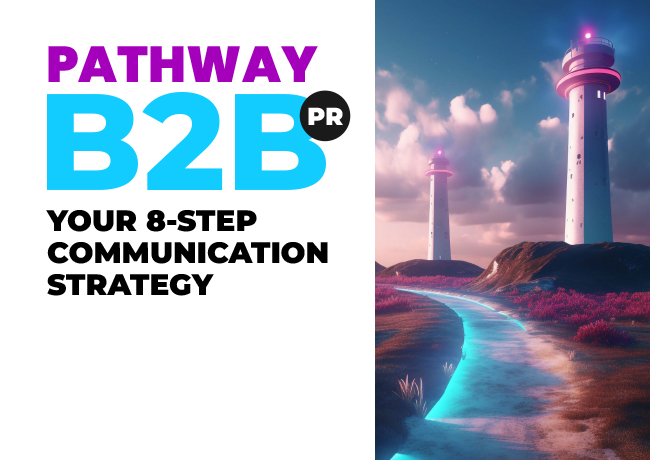
The Role of Insight in Building a Distinct Brand
Three things you need to be a distinct brand
(Part one of three)
First, you need Insight. Insight comes in four flavours –
consumer insight,
prospect insight,
founder insight,
competitive insight.
What is Consumer Insight?
Without consumer or customer insight, your brand will never be recalled when it matters. You need to know why your most recent customers bought into your brand – what was their situation, requirement, aspiration or inspiration. From their mouths, in their words, you need to hear what emotions your brand stirred, what assurances they felt, and what outcomes they envisaged.
Aim to secure this insight within the first three months of contracting. It will inform your most effective messaging to win other similar projects, and, importantly, it will also tell you how to keep that customer happy by delivering against the expectations you have set.
Remember, if, in their minds, they bought: “a safe pair of hands with strong governance and sustainability credentials,” that’s what you must deliver and keep giving them. If, however, they bought ‘an exciting, fast-paced learning journey’, then similar, you know what they’re expecting. This is almost irrespective of what you thought you sold them!
It’s all about their perception. You may think you’re a ‘safe pair of hands’, but in their world, whoa, you’re ‘a rebel stirring sh*t up’.
What is Prospect Insight?
You’ll need to understand what your target customers need help with – there are dozens of sources for this type of information. Social listening tools are perfect for this, one of our favourites is AnswerThePublic.com. It makes it crystal clear what people are searching the web for which is clearly indicative of the problems they are wrestling with. This insight combined with your customer insight is turbo marketing fuel!
Join some groups your target customer will likely be part of and observe what they talk about, what they ask for help with and most importantly, how they respond to others in the group. It can reveal their understanding, biases as well as who your competitors are.
Then, consider which of the issues they are struggling with that you might be equipped to resolve – directly and indirectly. Capture these in your content ideas bank so that when you do start outreach you can develop blogs, thought leadership articles, videos, e-books, podcasts, and social posts that answer their specific interests, issues and concerns.
These insights will help you shape your unique offering, tone of voice and overarching communication style.
Founder insight
Why was your business set up in the first place?
Companies are usually formed to address an issue or challenge not currently being met. We don’t set up a business and go woohoo, I can do the same as you – go me!
We set up a business because we can do something, usually one thing better than whatever exists in the market at that time. For example, you believe that you can deliver a product or service that is faster, cheaper, easier to use, fairer, kinder to the environment or democratises choice. The resulting key benefit to the potential customer can be any one of the following:
1 Better decision making.
2 More informed risk taking
3 Highter retention and customer advocacy
4 Increased employee performance or staff retention.
5 Better governance, health and safety.
6 More security.
7 Better, healthier living conditions.
An Instinctive Exercise
Find the responses for the following through discussion with your wider team:
Identify your founder’s motivation for setting up the business (other than making money)
If they are still around, ask the founder what benefit they thought they could deliver to attract customers.
Is the founder’s original intent still relevant today, what’s changed and what factors now need to be considered?
How can you better convey your distinct purpose?
How do you demonstrate that you are meeting your distinct offer?
Nine times out of ten – when you go through this process, you’ll find the beautiful undiluted truth of how you are different and why it’s still relevant.
You may also find yourself wondering why you created so many layers of complexity and fluff, obscuring its brilliance.
Competitive insight
Competitive insight is important to creating a distinctive brand because it helps you understand the market dynamics. It helps to crystalise who owns what key messages, who you are competing with and the time and money you need to invest to compete.
Social listening will help to some degree, as will your customer and prospect intelligence – combined an invaluable source for intelligence.
An Instinctive Exercise
For PR and marketing communication purposes, try this simple piece of research and analysis:
List your top 5 competitors.
Google them: identify what relevant news articles come up in the first 2 pages on the news
tab.
How do they describe themselves?
What campaigns or initiatives are they currently involved in?
What have media said about them?
This exercise will give you absolute clarity about what you should be focussing on to ensure you can be heard above the hoard.
Finally, the old saying goes ‘You have two ears and one mouth and should use them in that ratio’. But how often do we find ourselves speaking more than we listen? It’s like entering a drinks reception and walking up to a bunch of people and talking about yourself before listening to what they are saying. Who does that? A good communicator reads the room first – gathering insight is our equivalent of reading the room.
Still not sure?… See part 2 of 3.
Our insights

Your 8-Step Communication Strategy Guide
A comprehensive guide to delivering your business goals using intelligent and relevant messaging.

